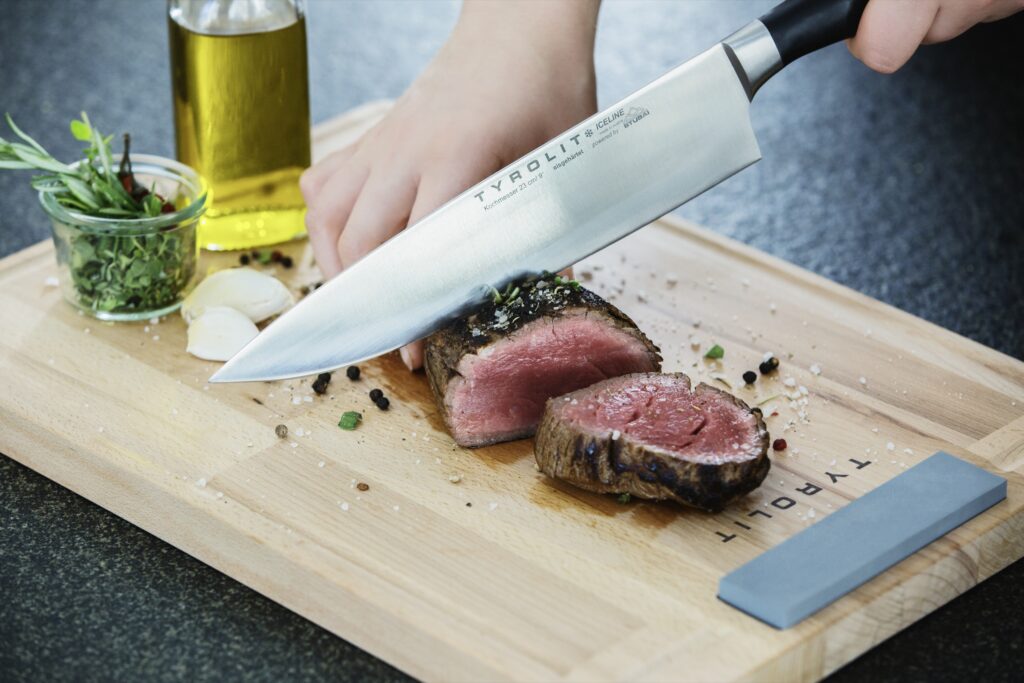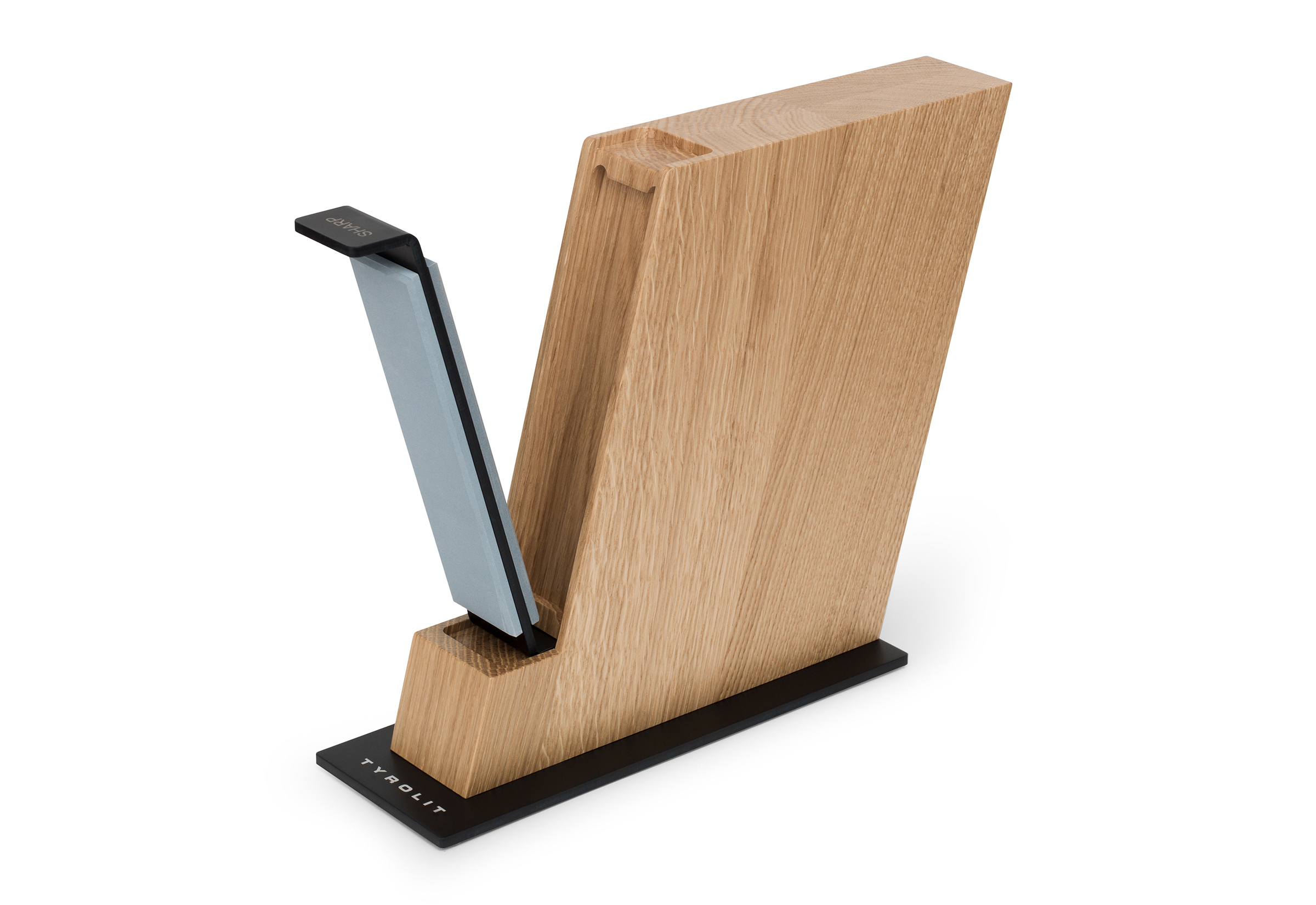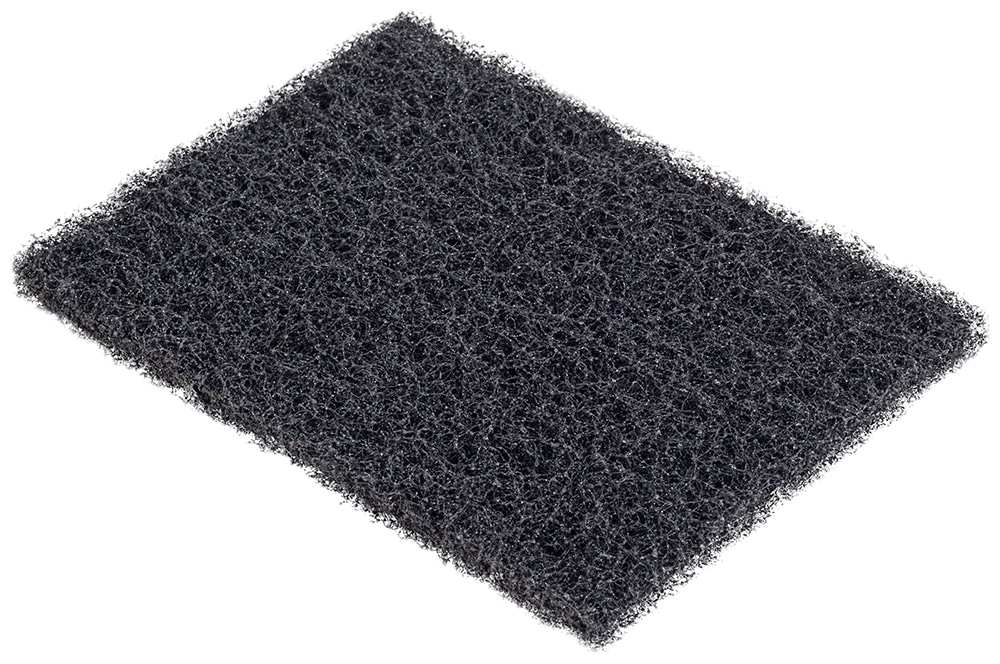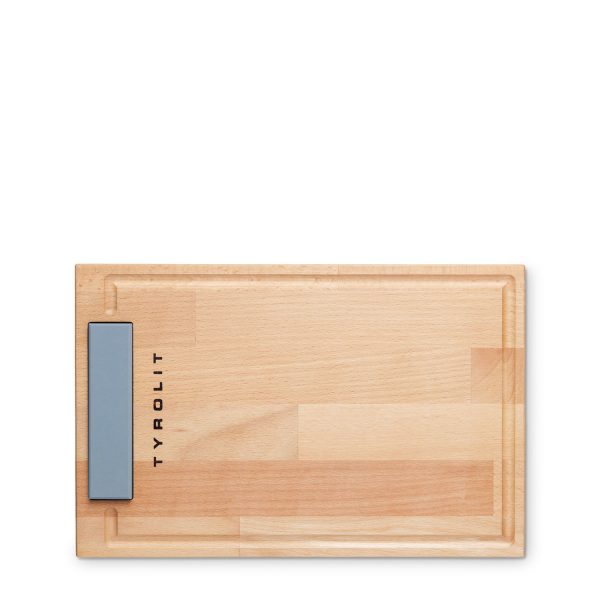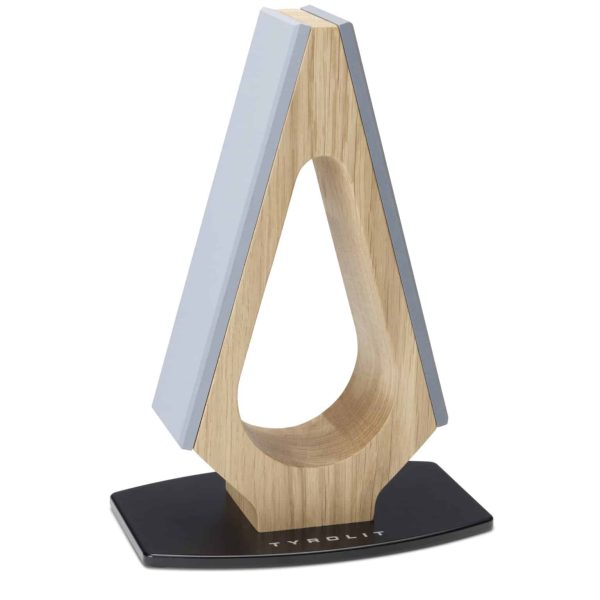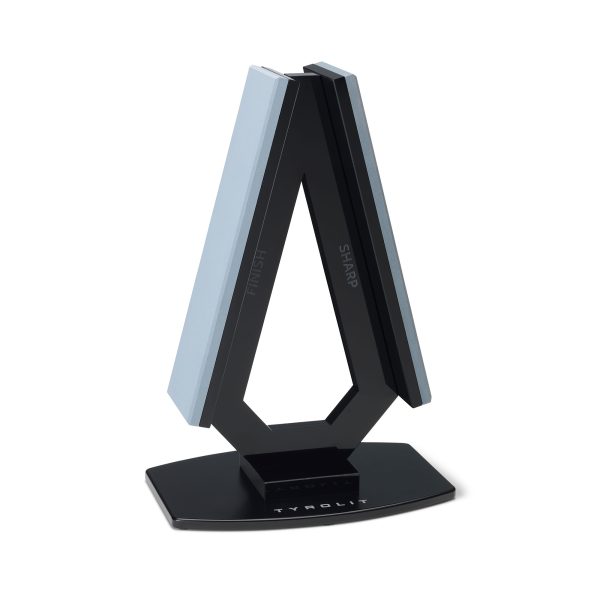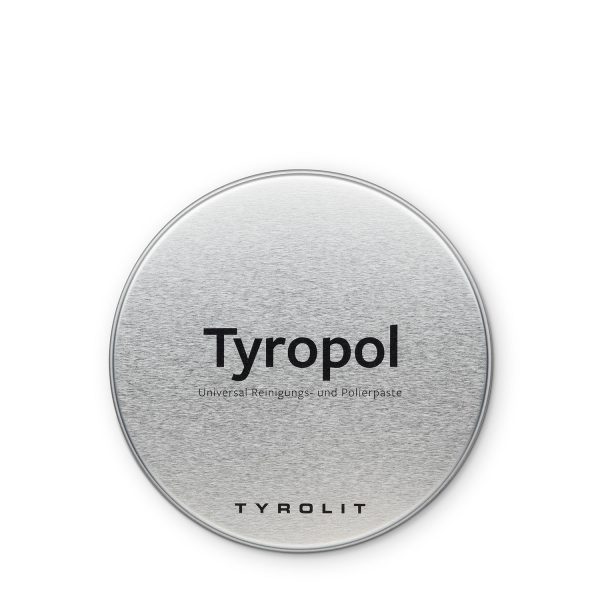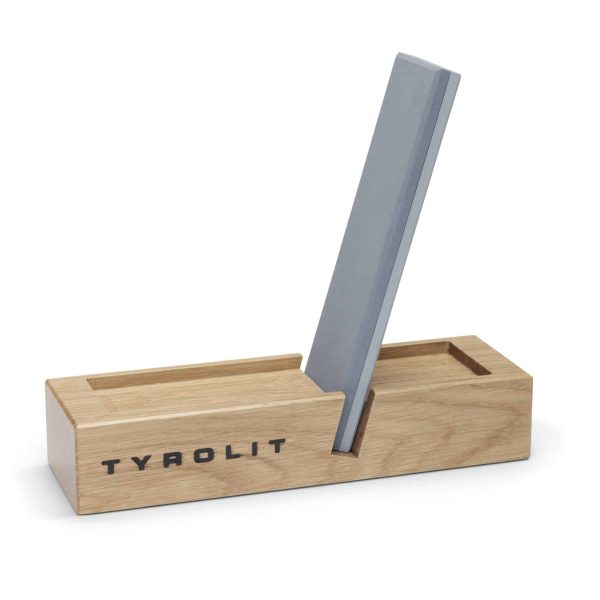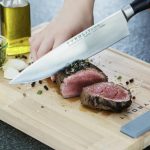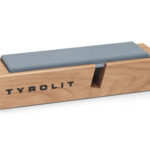Parts of the knife – how is a knife constructed?
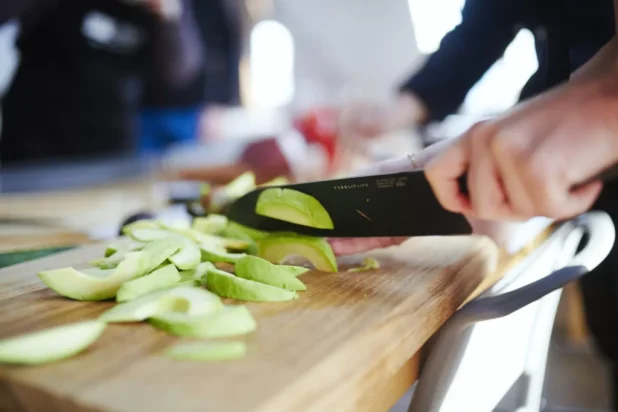
Have you ever heard of the “Wate”? Or wondered what the difference between a bolster and a tang is? Often, we use traditional terms to describe the parts of a knife, terms that reflect the long history of the knife and its cultural significance. These terms may be less common today – but they are no less important, especially when it comes to the care of your kitchen knives.
In this article, we explain the various parts of a knife from the tip to the handle. We’ll demonstrate which components need to be combined to provide you with a fully functional cutting instrument. Furthermore, we will discuss the essential maintenance to ensure your knife blades remain sharp and ready for action.
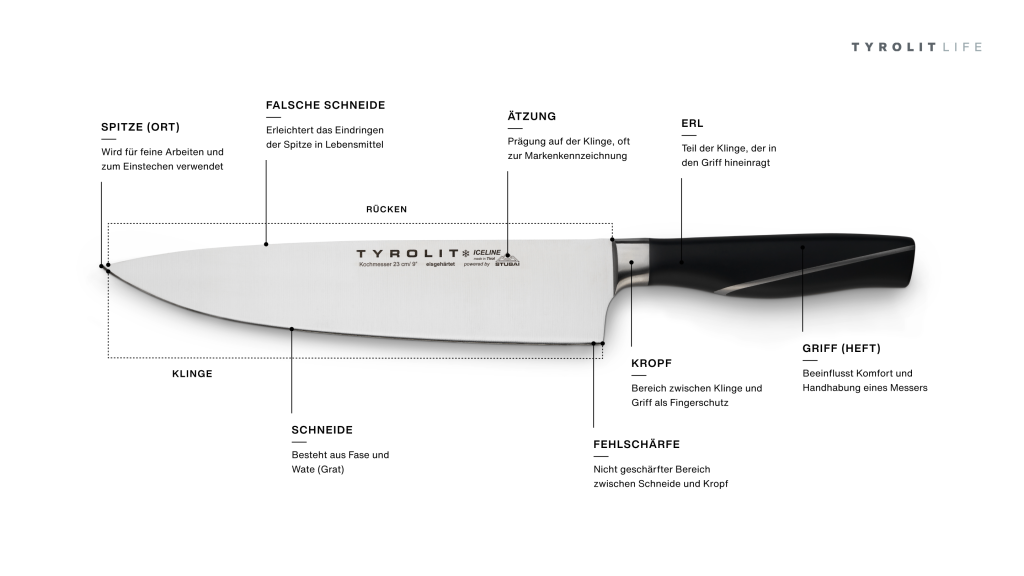
1. Tip or Point
The tip of a knife, also known as the point, is the frontmost part of the blade and is used for fine work and piercing. Its shape varies depending on the type of knife: a pointed blade is suitable for precise tasks and piercing, while a rounded tip enables safer work during less precise tasks.
Already at the top, it can be seen that knives are similar in their basic components, but how they are constructed and combined is decisive for the application possibilities of the countless types of knives.
2. False Edge
The false edge is a beveled or partially sharpened surface on the back of a knife blade, most commonly near the tip. It reduces the weight of the blade, improves balance, and facilitates the penetration of the tip into food.
A false edge can be either sharpened or unsharpened. When sharpened, it is often used as a secondary cutting edge. If it is not sharpened, it is also referred to as a Swedge.
3. Blade
The blade encompasses the entire front section of the knife that is used for cutting, including the tip, edge, and spine. The quality and type of the material used influence the blade’s edge retention and corrosion resistance.
Various blade shapes are designed for specific cutting tasks, such as wide blades for chopping or narrow blades for delicate slicing. Throughout the history of the knife, a wide variety of blade shapes have evolved, so that today there are knives specially developed for many specialized tasks.
Knife shapes in and outside the kitchen: What blade shapes are there?
Depending on the intended use, there are a wide variety of blade shapes. In this article, we provide an overview of the most important of these.
4. Cutting edge
The cutting edge is the sharp edge of the blade responsible for cutting. It can be smooth or serrated and is composed of the bevel and the edge.
A smooth cutting edge cuts cleanly through soft and hard materials, while a serrated cutting edge with a so-called wavy cut is ideal for cutting through bread and other foods with a hard crust and soft interior.
Regular sharpening with a whetstone or knife sharpener keeps the cutting edge functional and ensures precise cuts. Depending on wear, a coarser grind (e.g., with 400 grit) is initially performed, followed by a finer grind (e.g., with 800 grit). To better integrate these two processes, Tyrolit Life’s whetstones and knife sharpeners offer both a coarse and fine grit, meaning only one tool is needed for both tasks.
4.1 Phase
The bevel is that angled area of the edge that leads to the burr and sets the sharpening angle. The angle of the bevel thus also affects the sharpness and durability of the blade’s edge.
A steep bevel (small angle) results in a sharper but less durable cutting edge, while a larger angle results in a more robust but less sharp cutting edge.
In any case, regular maintenance of the blades is also crucial for the sharpness of knives. Approximately 15 degrees is the ideal sharpening angle for most European knife types. This angle is therefore also preset for Tyrolit Life knife sharpeners.
4.2 Burr or Edge
The burr, also known as the edge, is the fine edge that forms on the blade of a knife. It arises during the sharpening process and is responsible for making the blade sharp. A new burr is formed by the uniform removal of material when sharpening a knife with a whetstone.
The burr, therefore, plays a crucial role in the use of kitchen knives, especially when precise cuts are needed. A well-maintained burr ensures clean cuts and reduces the effort required in cutting.
5. Back
The back is the blunt top edge of the blade, providing stability and balance. A thicker back increases stability and allows pressure to be applied when cutting, while a thinner back provides more flexibility. This is especially important for kitchen knives that require precise control and even cuts.
6. Etching
Etching is a decorative or informative embossing on the blade, often for branding or improving aesthetics. It can also contain practical information such as the type of steel or the origin of the knife.
Etching is an indication of the high-quality workmanship and attention to detail that go into a knife.
7. False Edge
The false edge is the unsharpened area between the cutting edge and the bolster, which enhances the blade’s stability and prevents breaking or bending. It also ensures a secure grip during cutting.
8. Goiter
The bolster is the thickened area between the blade and the handle, serving as finger protection and affecting the knife’s balance. It prevents fingers from slipping onto the blade, allowing for safe and controlled cutting.
The bolster is especially important in heavy kitchen knives that are often used for robust cutting tasks.
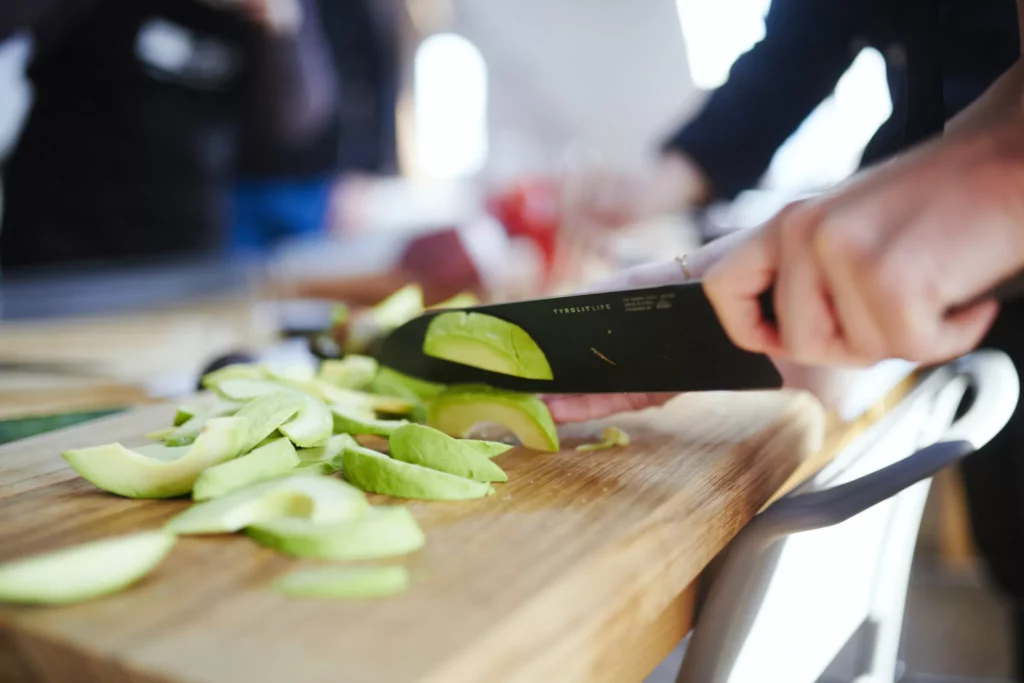
9. ERL
The Erl is the part of the blade that protrudes into the handle and contributes decisively to the stability and balance of the knife.
There are different types of tangs: The full tang (Vollerl) extends throughout the entire length of the handle, ensuring even weight distribution and increased stability. Partial tangs (Teilerl), on the other hand, only extend partially into the handle, making them less stable. These knives are often lighter, but also less balanced and stable.
10. Handle or Hilt
The handle, also known as the hilt, is the part of the knife that is held. It often consists of wood, plastic, metal, or Micarta (a material used, for example, in the Tyrolit Life Darkline knives) and affects the knife’s comfort and handling.
An ergonomically shaped handle provides better grip and reduces fatigue during extended cutting tasks. The material used plays a role as well, with the durability and maintenance requirements of the handle material always needing consideration.
Knife care with tools from the Tyrolean abrasive expert
To keep your kitchen knives in top condition, Tyrolit Life offers a range of specialized tools.
With whetstones from Tyrolit Life, for example, you can sharpen the blade of your knives. The whetstones are available separately as well as in the form of practical knife sharpeners or integrated into other knife accessories – including a preset sharpening angle of 15 degrees. This makes these whetstones suitable for both beginners and professionals.
The knife block with integrated whetstone offers a convenient and safe storage solution and ensures that your knives are ready for use at all times. These blocks protect the blades and enable quick re-sharpening directly at the workplace. And they are also an elegant eye-catcher for your kitchen.
Tyrolit Life cutting boards also contribute to the longevity of your knives. Made from oiled beech wood, they protect your knife blades during cutting. However, when it’s time to sharpen a knife, this can be easily done thanks to the integrated whetstone with a pre-set sharpening angle.
At Tyrolit Life, you will not only find high-quality kitchen knives for a wide variety of tasks, but also practical tools to store, protect and maintain them.
FAQs
How is a knife constructed?
What are the parts of a knife called?
What is the bolster on a knife?
What is the sharp side of a knife called?

